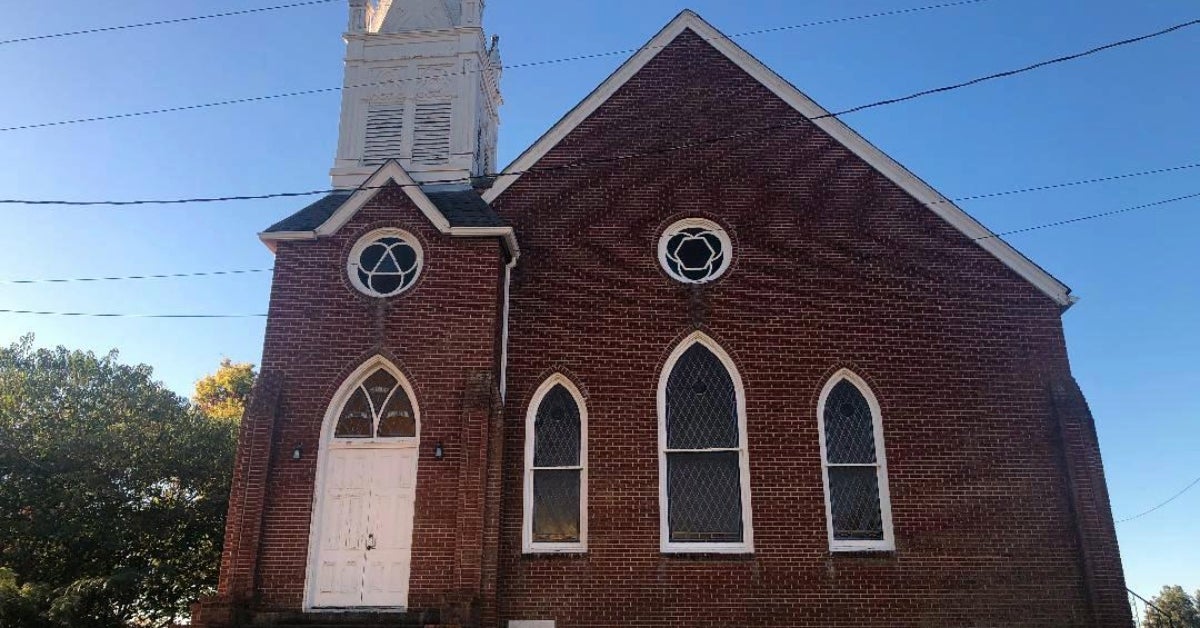LOOKING BACK: The history of Wesley Methodist Episcopal Church
Published 8:00 am Wednesday, November 8, 2023

- Wesley Methodist Episcopal Church as it stands today. (Photo Submitted)
By Nancy Bell, Vicksburg Foundation for Historic Preservation
During the early days of Vicksburg’s history, people enslaved by Methodist congregants worshipped with white people.
Records reveal that 26 African Americans attended Methodist services in 1833, 107 in 1836, 65 in 1837 and 55 in 1838. Because of their numbers, in 1846 the Methodist Church at Cherry and Grove streets was given to the Black Methodists when a new white Methodist church was built on the southwest corner of Crawford and Cherry streets.
The African-American church was named Wesley Chapel Methodist Episcopal and a white minister was appointed to lead the congregation. An announcement in the Vicksburg Daily Whig in February 1846 stated that the Rev. John Lane, would preach at Wesley on the 8th and then on the 21st, the Rev. Cooper would preach “unless providentially prevented.”
In 1860, Jefferson and Julia Hedrick, a white couple, helped Wesley Church buy a lot that faced Openwood Street and was set back from First East Street, and a new church was dedicated in 1865. In 1886, the congregation began raising funds for a new church to be built to the east of the old building on First East Street.
Construction for the frame Gothic Revival church was started, with the cornerstone being laid on June 13, 1886. Among those to provide addresses at the cornerstone-laying celebration were Dr. C.K. Marshall and the Rev. J.M. Shumpert of the Jackson District of the Methodist Episcopal Church. Masonic lodges also took part in the ceremonies.
By Jan. 22, 1887, the building was complete enough that services were held there. An advertisement placed in The Vicksburg Evening Post by the church’s pastor, Samuel Cowan, announced that there would be “preaching by Dr. C.K. Marshall and the Rev. Shumpert, after which the Lord’s Supper will be administered. These services will continue for one week. Either Bishop Mailalieu or Merrill is expected during the meeting, also Dr. M.W. Taylor, editor of the Southwestern Christian Advocate.
“We respectfully invite the citizens to be present at these services and aid us in raising means to pay off some indebtedness. Several friends and members of the congregation are out in the city soliciting aid.”
The Rev. Cowan and his congregation continued to find ways to raise the funds necessary to complete the construction. In April 1887, they held a “Jug Breaking Concert.” Cowan announced that “there are 60 or more jugs in the hands of solicitors, and it is hoped that many will contribute to these jugs. We need $200 by the first of May to pay off some bills which fall due at that time. We are having some work done on the interior of our church, and hope to succeed in raising sufficient means to complete the church during the Spring and Summer.”
The church was finally completed and dedicated on Jan. 20, 1889. The congregation continued to use the old church building as a church hall until about 1907 when it was demolished.
Cowan continued to lead the church for many years and his obituary on July 1, 1917, was evidence of the love of his congregation for him. The Vicksburg Herald reported the funeral: “Silently the large audience stood at 11 a.m. yesterday at Wesley M.E. Church as the remains of the late Dr. S.A. Cowan were borne into the beautiful edifice erected during his administration as pastor, quite 12 years since. Tears were visible throughout the audience and many recalled that the lips now sealed had often offered solace to those in sore affliction and a stillness heavy with sorrow folded its embrace everywhere.”
In a 1925 article in The Vicksburg Evening Post, J.G.H. Bowman, the principal of Magnolia School, wrote that the congregation was large and influential and had attracted more noted African-American orators to this city than any other. The first Black Boy Scout troop in Vicksburg was founded in Wesley as was the Vicksburg Improvement Association, which met in the 1960s to champion the Civil Rights movement.
The church was remodeled in 1950 and 1951, adding brick veneer to the frame exterior but retaining the beautiful tower and interior finishes. The church remains today as a significant building in the neighborhood and an important part of Vicksburg’s African-American heritage.





